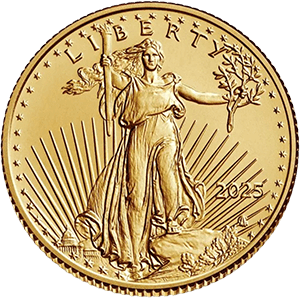A Precious Metal With a Finite Supply
From the gold ornaments of ancient Egypt to the bullion in central bank vaults today, gold has been at the center of human wealth for more than 6,000 years. Unlike currencies that can be printed or digital assets created with code, gold is physical, finite, and costly to extract.
Every ounce of gold that will ever be used for jewelry, coins, technology, or investment must come from the earth — and geologists warn that supply is dwindling. This raises a critical question for modern investors: how much gold is actually left to mine in the world today?
The Numbers Behind the Global Gold Reserves
The U.S. Geological Survey (USGS) estimates that roughly 210,000 tonnes of gold have been mined in all of human history. Out of that:
-
~190,000 tonnes are still in circulation today (as jewelry, coins, bars, central bank holdings, or industrial use).
-
~20,000 tonnes have been lost — buried in shipwrecks, scattered in electronics waste, or otherwise unrecoverable.
-
~50,000–60,000 tonnes remain in identified underground reserves.
Perspective:
-
At current annual mining output of ~3,000 tonnes per year, known reserves could be exhausted in 17–20 years.
-
That doesn’t mean gold will “run out” entirely — but extracting it will become more expensive and more limited as the richest deposits are depleted.
Where Is the Remaining Gold Found?
Gold is not evenly distributed around the world. The last significant reserves are concentrated in a handful of nations.
Top Countries by Known Gold Reserves (USGS 2024):
-
Australia — ~9,500 tonnes (world leader in untapped reserves, rich deposits in Western Australia).
-
Russia — ~6,800 tonnes (vast Siberian reserves, heavily state-controlled).
-
South Africa — ~5,000 tonnes (once the world’s top producer, but deep mining costs are high).
-
United States — ~3,000 tonnes (Nevada’s Carlin Trend remains prolific).
-
China — ~2,000 tonnes (major producer, though ore grades are falling).
-
Canada, Peru, Indonesia, Uzbekistan, Ghana — each holds smaller but still valuable reserves.
Key Insight: Future gold supply will depend heavily on politics, environmental policy, and economic incentives in these regions. For example:
-
South Africa has the gold, but costs and labor unrest hinder extraction.
-
Russia has reserves, but sanctions and geopolitics limit exports.
-
Australia’s deposits are accessible but increasingly tied up in environmental restrictions.
The Concept of “Peak Gold”
Mining analysts often refer to “peak gold” — the point at which annual gold production hits its maximum level before entering permanent decline.
-
Global gold discoveries peaked in the 1990s, when major new deposits were still being found.
-
Since then, new discoveries have fallen sharply, despite increased exploration budgets.
-
Ore grades are declining: In the 1960s, average mine grades were 10+ grams of gold per tonne of rock. Today, many mines operate on grades below 1 gram per tonne.
What This Means:
Extracting future gold will require moving more rock, spending more on energy, and dealing with more environmental opposition. The “easy gold” era is over.
Could We Actually Run Out of Gold?
In practice, the world won’t wake up one day and find “no gold left.” Instead, the problem is:
-
Economically recoverable reserves are shrinking. Gold in the Earth’s core may be abundant, but it’s inaccessible.
-
Some reserves are technically recoverable but not profitable under current technology and energy costs.
-
New exploration may add to reserves — but giant new discoveries like the Witwatersrand in South Africa are increasingly unlikely.
The Future Possibility: Space mining (e.g., asteroids rich in metals) has been proposed as a solution, but it’s decades away at best and filled with technical, legal, and economic barriers.
Recycling: The “Sixth Continent” of Gold
One often-overlooked factor is recycling. Unlike oil, gold is not destroyed when used. It can be melted, refined, and reused infinitely.
-
Roughly 25–30% of annual gold supply comes from recycled sources (mainly jewelry and electronic waste).
-
However, recycling depends heavily on gold prices. High prices encourage more recycling, low prices discourage it.
-
Recycling is not enough to replace mining — but it softens the decline.
What This Means for Investors
The numbers paint a clear picture:
-
Finite supply: Only 50,000–60,000 tonnes remain in the ground.
-
Declining production: Peak gold is likely behind us, meaning annual supply will shrink.
-
Rising demand: Central banks (especially China, India, and Russia) are buying record amounts. Investors turn to gold during inflation and crisis.
Economic Reality: Scarcity drives value. Just as ancient kings prized gold because it was rare and lasting, modern investors recognize that its finite supply is the key to its enduring wealth-preserving power.
Historical Context
-
Ancient Egypt exhausted its rich Nubian gold mines thousands of years ago — sparking expeditions further afield.
-
Spain’s empire rose on New World gold and silver, only to collapse when those flows slowed.
-
The California and Klondike rushes ignited because new discoveries are rare, life-changing events.
Every age has faced the same truth: gold is scarce, and scarcity is the foundation of its value.
Why Gold’s Future Is Written in Its Scarcity
With only 50,000–60,000 tonnes of gold left in known reserves, humanity is living in the twilight era of easy gold mining. Every new ounce is harder, costlier, and riskier to extract.
For investors, this reality is clear:
-
Gold is not just another commodity.
-
It’s the only global asset that is both universally accepted and permanently scarce.
-
In a world of money printing, debt expansion, and volatile markets, gold remains the constant.
As global gold reserves dwindle, the metal’s scarcity will only increase its role as a cornerstone of wealth preservation. Owning gold today isn’t just smart investing — it’s securing a piece of the Earth’s most finite treasure.



